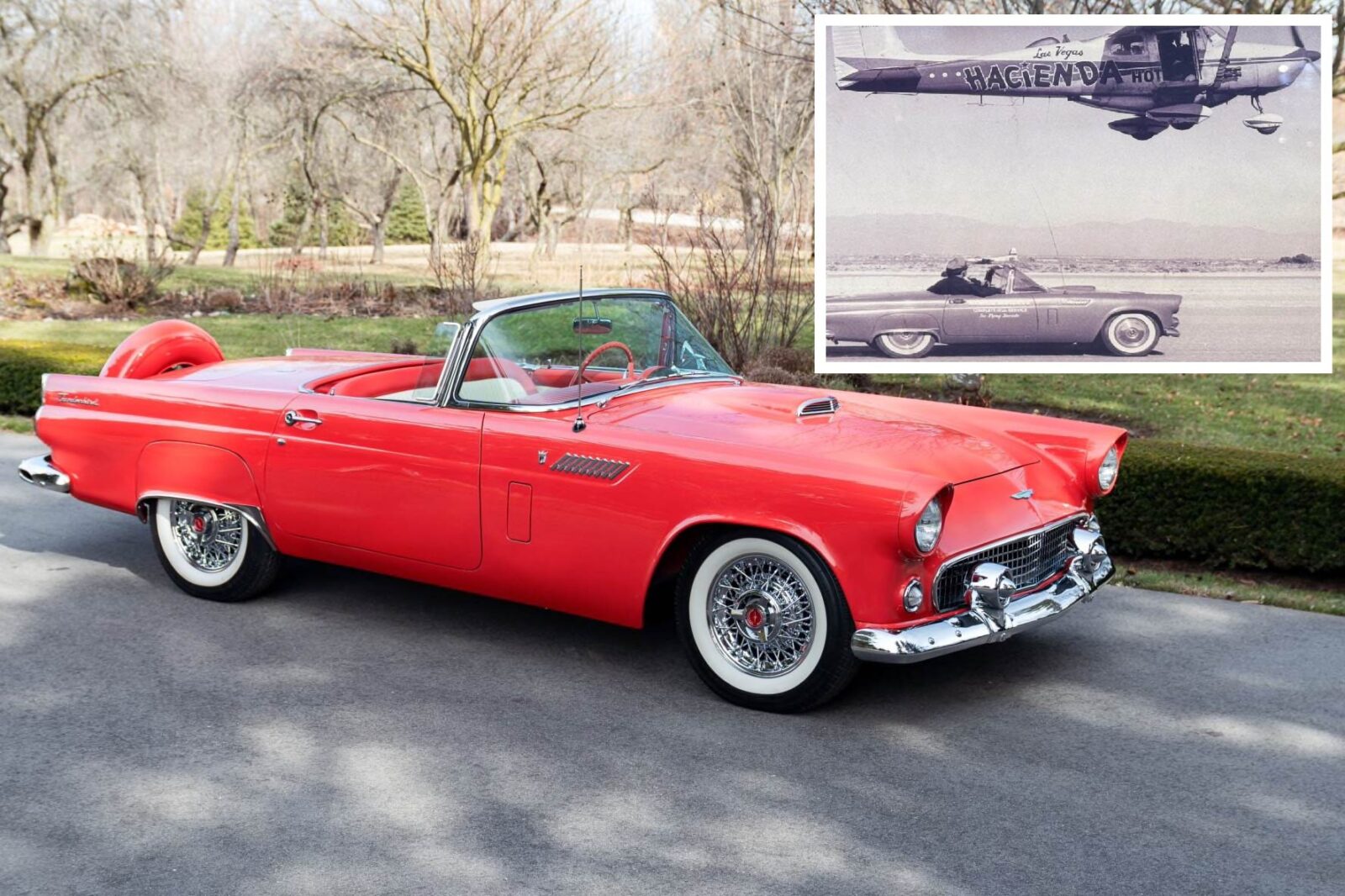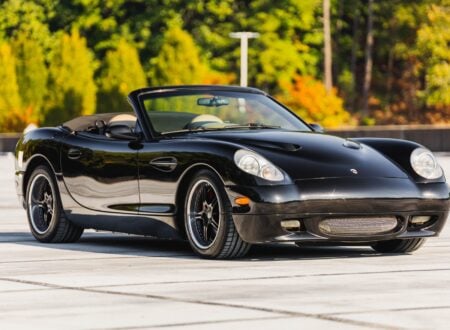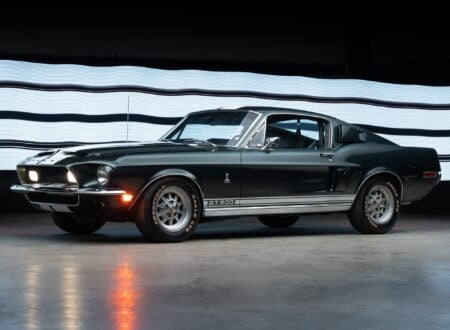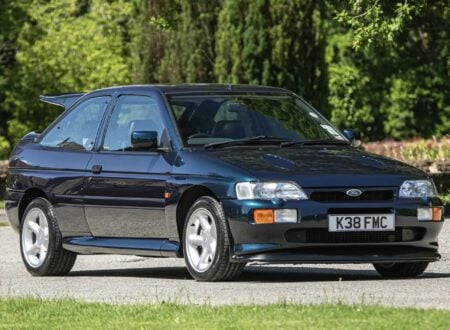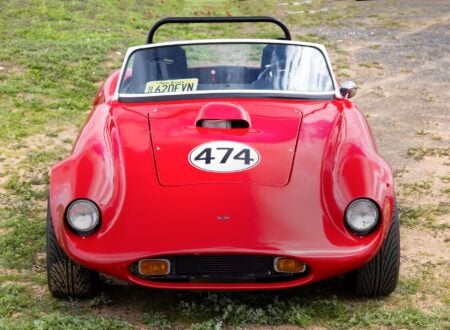This 1956 Ford Thunderbird was originally used as an emergency firefighting vehicle at the Las Vegas Airport. It was then used as the refueling vehicle for the longest endurance flight in the world, when a Cessna 172 remained aloft for 64 days, 22 hours, and 19 minutes in 1958.
After this fascinating first few years of life, this car was purchased by the Hughes Tool Company in 1967, belonging to Howard Hughes, the business magnate, aerospace engineer, pilot, and man behind the Spruce Goose.
Fast Facts – The Ford Thunderbird “Crash Wagon”
- This 1956 Ford Thunderbird was initially used as an emergency firefighting vehicle at the Las Vegas Airport and then as the refueling vehicle for the longest endurance flight in the world, when a Cessna 172 remained airborne for 64 days, 22 hours, and 19 minutes in 1958.
- In 1958, Robert Timm and John Wayne Cook took off in a modified Cessna 172 from Las Vegas in an attempt to set the world record for the longest endurance flight, which was funded as a publicity stunt for the new Hacienda casino. They remained airborne for over two months, refueling mid-air using this Thunderbird “Crash Wagon” and other vehicles passing up 5-gallon fuel cans on ropes.
- After its fascinating early years, this Thunderbird was purchased in 1967 by the Hughes Tool Company, belonging to the business magnate Howard Hughes. It remained in the company’s inventory for years before being acquired by Hughes’ private pilot John Seymore in the mid-1970s.
- The fully restored Thunderbird “Crash Wagon,” with under 43,000 original miles, is being auctioned by Mecum in Indianapolis on May 17, 2024, with an estimated price of $90,000 – $110,000 USD. It played a crucial role in the longest endurance flight in history, which was a major news event and publicity stunt for the Hacienda casino in Las Vegas.
The Longest Endurance Flight In History
In 1958 two men, named Robert Timm and John Wayne Cook, took off in a modified Cessna 172 from the Alamo Field airport in Las Vegas, Nevada. They would remain in the air for a record breaking 64 days, 22 hours, and 19 minutes – a record that still stands today, 66 years later.
Above Video: This short episode from Half as Interesting covers the world’s longest flight endurance record, and gives a wealth of information about the preparation, the record breaking flight, and the what came afterwards.
The reason for this record breaking endeavor was public relations. Robert Timm was a slot machine mechanic in Las Vegas and a former WWII bomber pilot. An entrepreneur was planning to open a new, family-friendly casino named the Hacienda, and Timm convinced him to fund the pursuit of the world flight endurance record.
Once approval was given, he bought a Cessna 172 and set about modifying it with an additional 95 gallon belly tank, which was linked to the 47 gallon wing tank via an electric pump. A simple sleeping area was set up in the back of the cabin, a wash basin and a chemical camp toilet were also fitted.
Due to the fact that the flight was planned to last at least a month and preferably two or more, the oil lines to the engine were modified to allow oil and filter changes while the engine was running. The aircraft was ready for the attempt in late 1958, so on December the 4th, 1958, at 3:52pm, it took off with full tanks and Robert Timm and John Wayne Cook in the cockpit.
Once airborne the plane circled back and flew low and slow over the runway so a chase vehicle could paint white stripes on the tires – this was to ensure it didn’t make any secret landings in the desert. With this completed, the plane gained altitude and began flying around Las Vegas and the surrounding desert areas.
The two men would remain airborne for over two months, refueling by either a pickup truck or the airport’s 1956 Ford Thunderbird “Crash Wagon” that would pass up 5 gallon fuel containers at the end of a rope, and take in the crew’s garbage and other waste.
The record attempt was a major news event in Las Vegas, with the two pilots regularly being interviewed via radio and appearing in local newspapers as well as the TV news shows of the time.
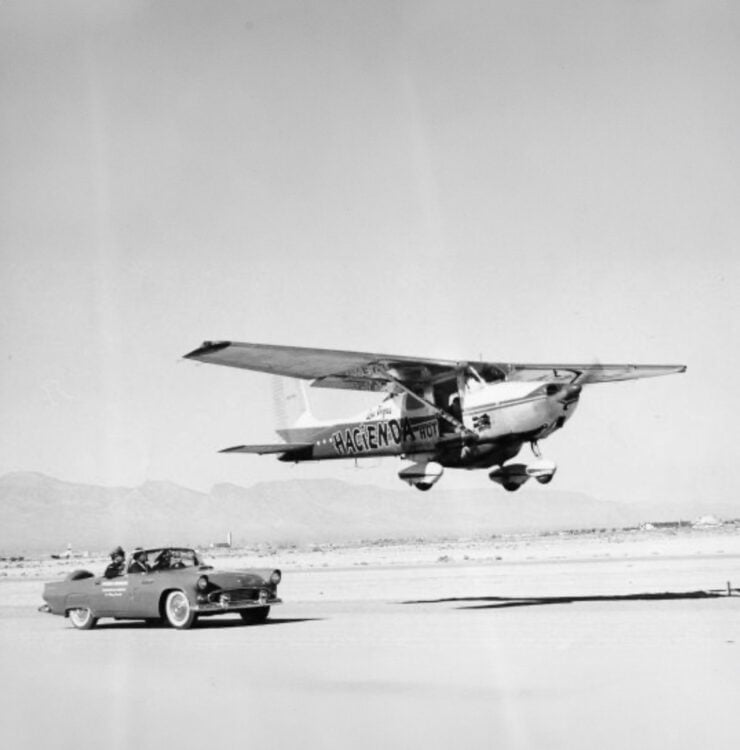

The casino name “Hacienda” painted down either side of the aircraft in a jaunty font resulted in excellent publicity for the new venture, making it a nationally-known brand in under two months and ensuring we’re still talking about it all these years later.
The Hacienda Hotel would open in 1956 and close in 1996, the Cessna used in the successful record breaking attempt was deemed unsafe to fly afterwards, the engine was completely gummed up with carbon, and it was placed on display above the baggage carousel at Las Vegas Harry Reid International Airport where it can still be seen to this day.
The 1956 Ford Thunderbird “Crash Wagon” Shown Here
This 1956 Ford Thunderbird was known early in its life as the “Crash Wagon,” as it was bought new by George and Peg Crockett, founders of Alamo Airways and owners of Alamo Field, for use as an aircraft support and fire fighting vehicle.
When it had been ordered it had been specified with the optional, larger 312 cubic inch V8 and the automatic transmission, which meant it was both quick and easy to drive – making it an ideal first responder vehicle.
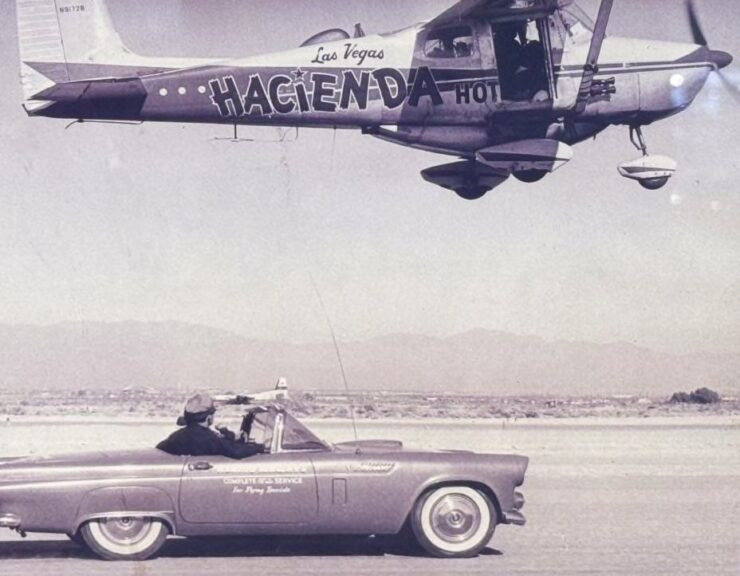

After being used in this role, and as the support car for the Hacienda world record endurance flight in 1958/1959 the car was later sold to Howard Hughes’ Hughes Tool Company, remaining in the company’s inventory for a number of years before passing into private hands in the mid-1970s when Hughes’ private pilot John Seymore bought it.
The car is now in fully restored condition, and it’s due to roll across the auction block with Mecum in Indianapolis on the 17th of May. It has just under 43,000 miles on the odometer and the price guide is $90,000 – $110,000 USD. If you’d like to read more about it or register to bid you can visit the listing here.
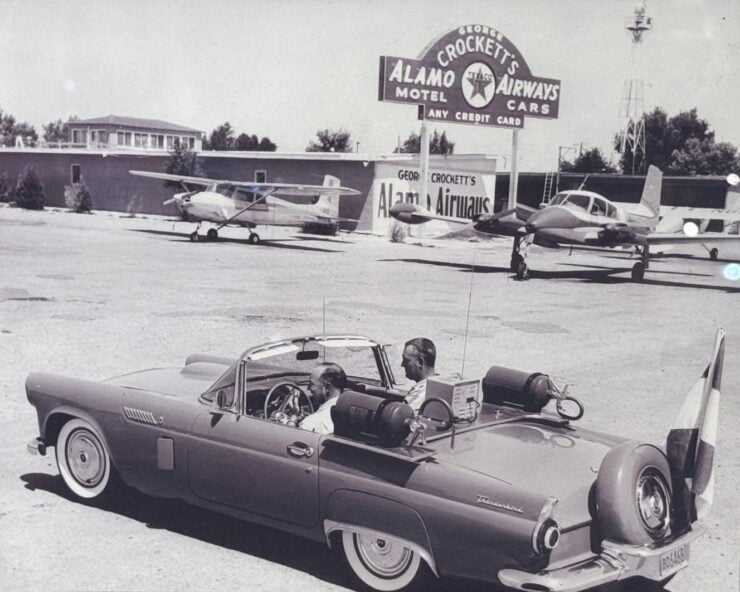
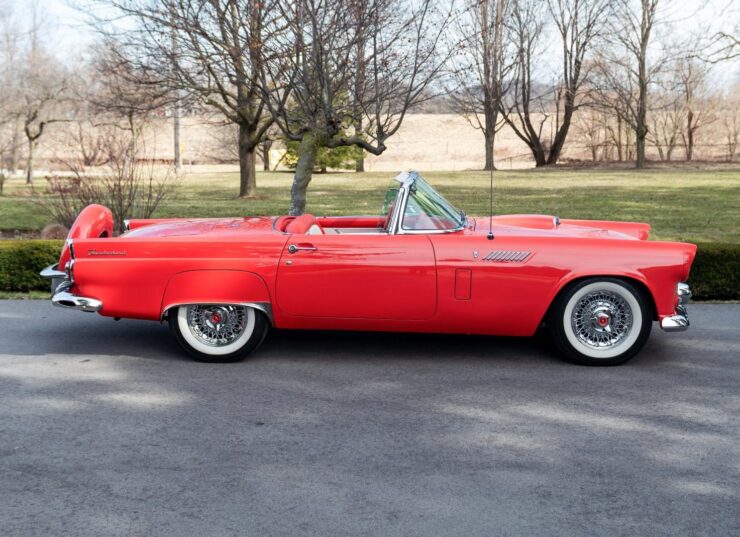
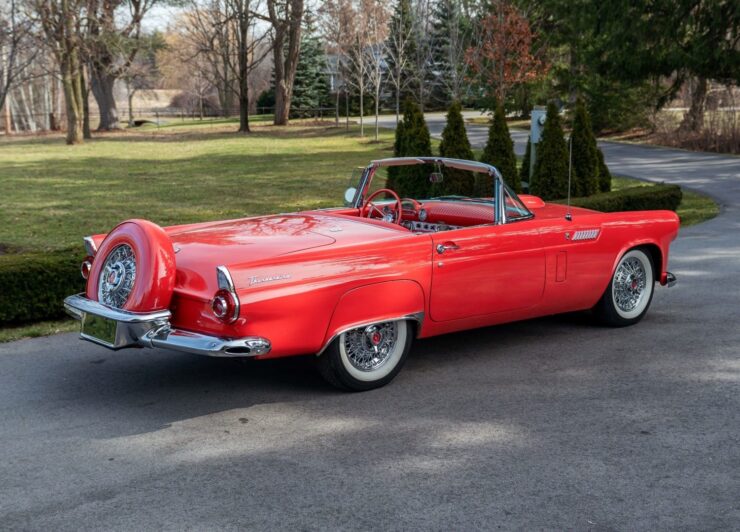
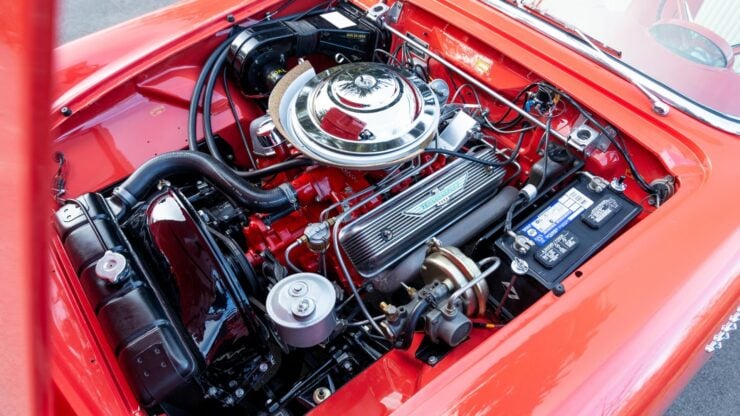
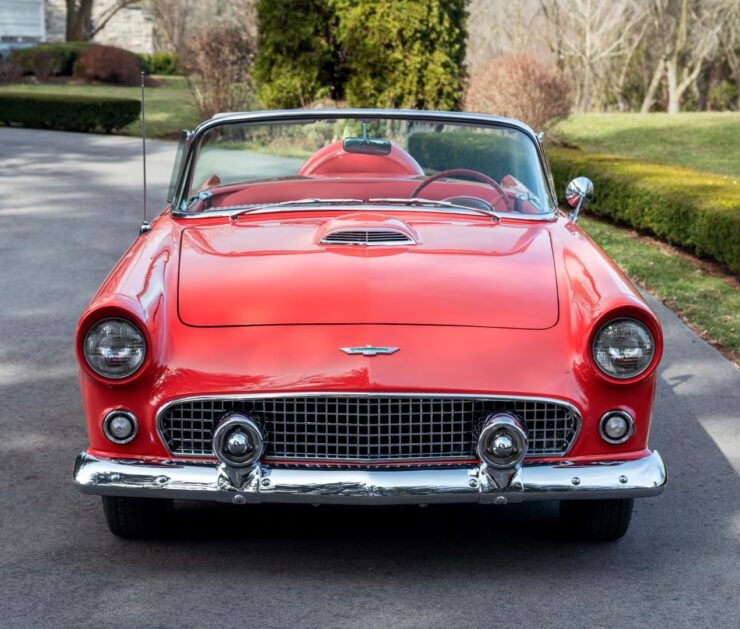
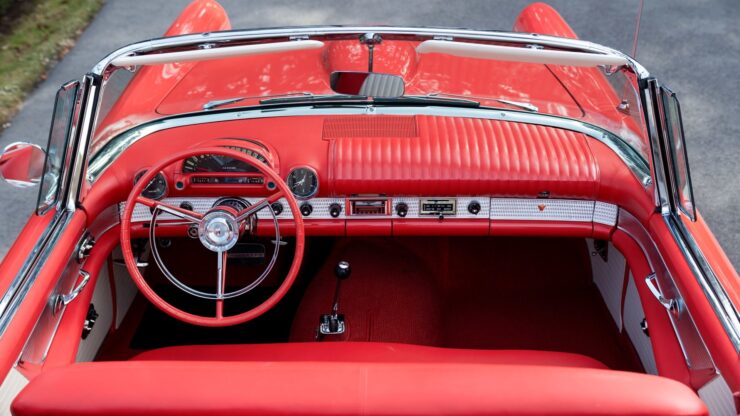
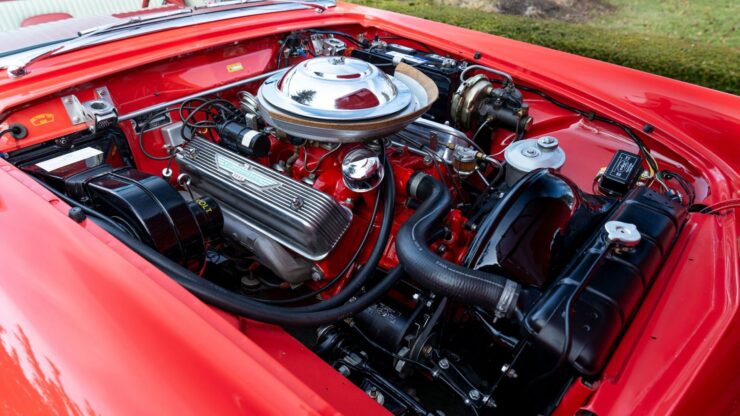
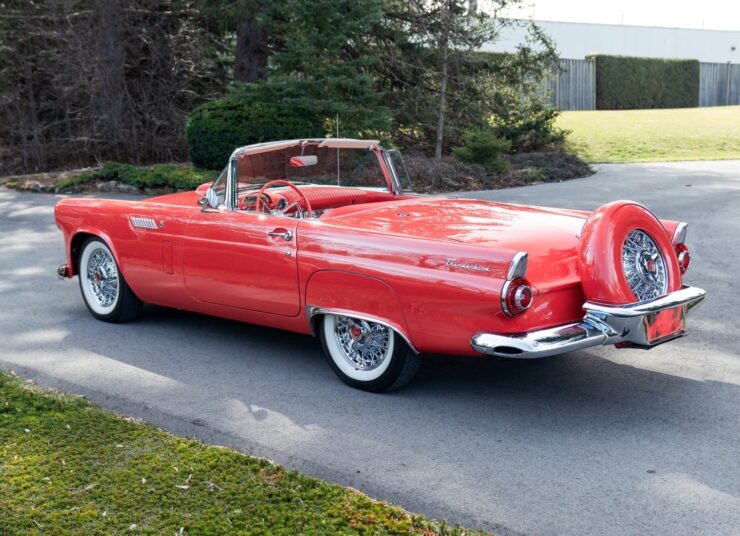
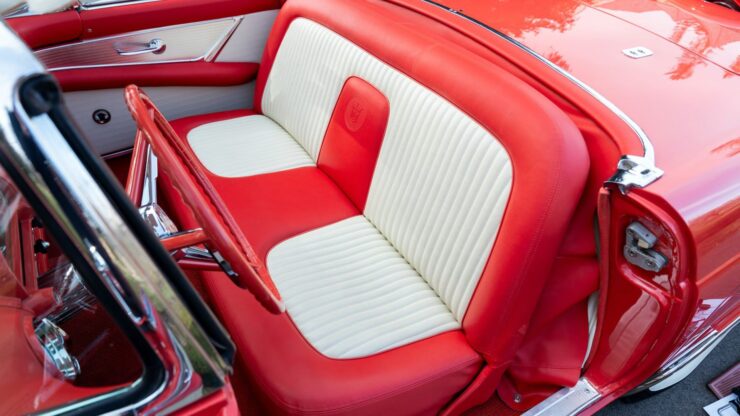
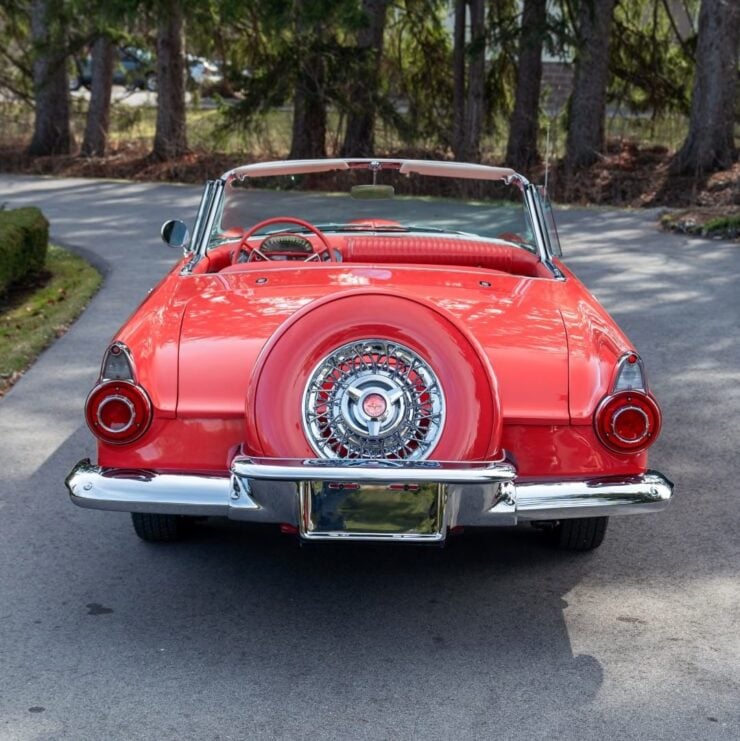
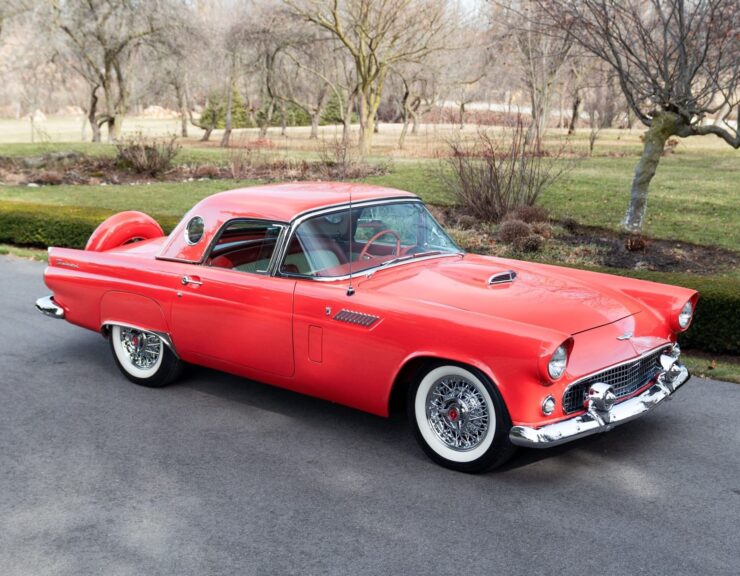
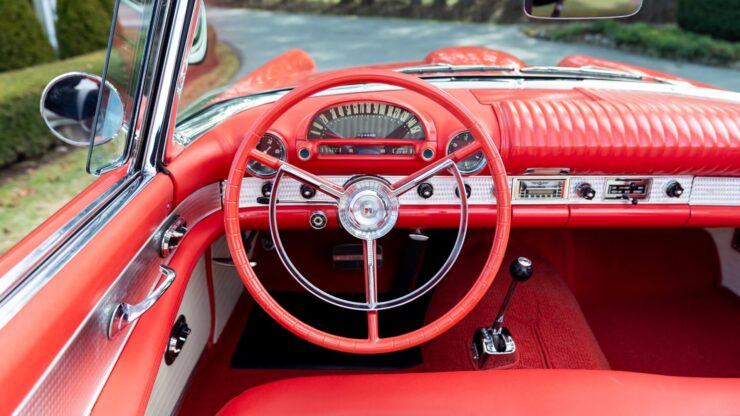
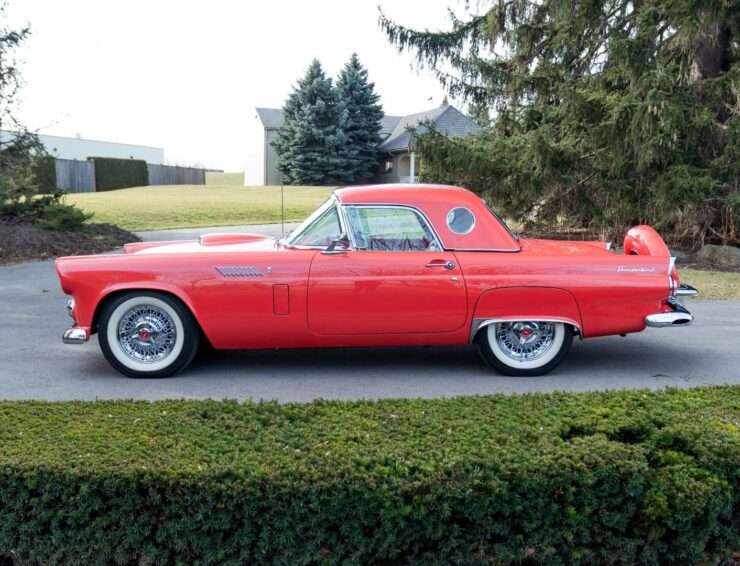
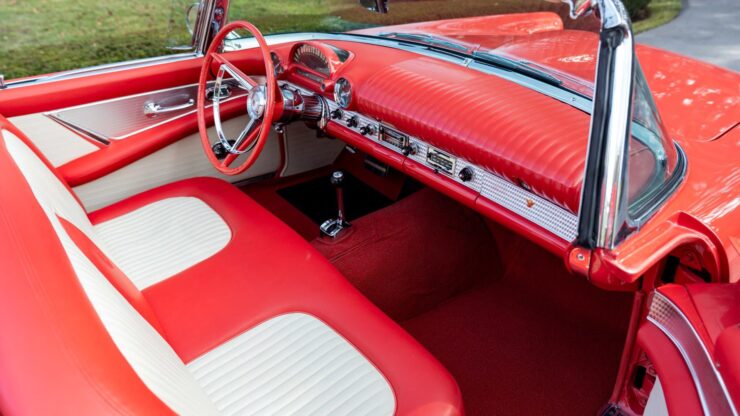
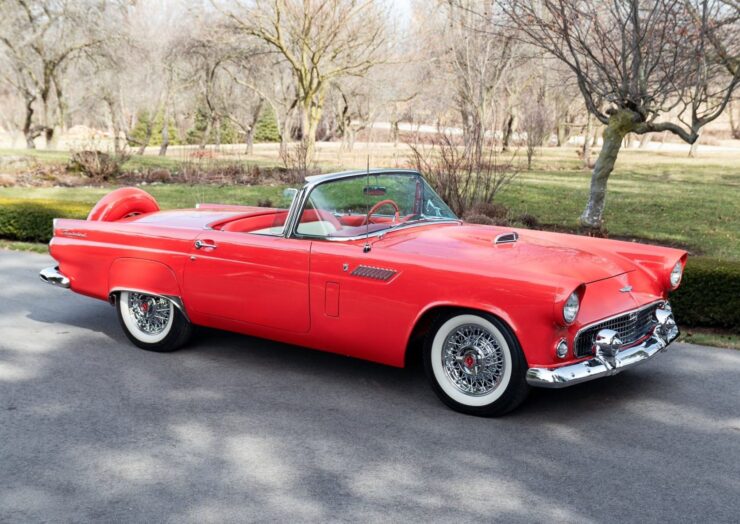
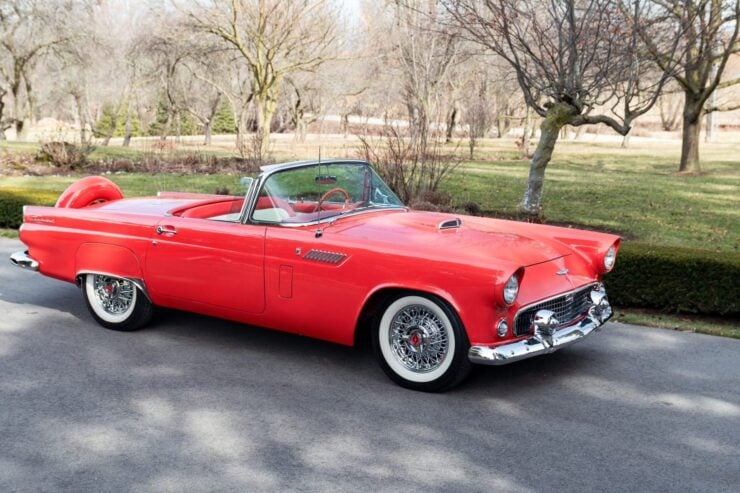
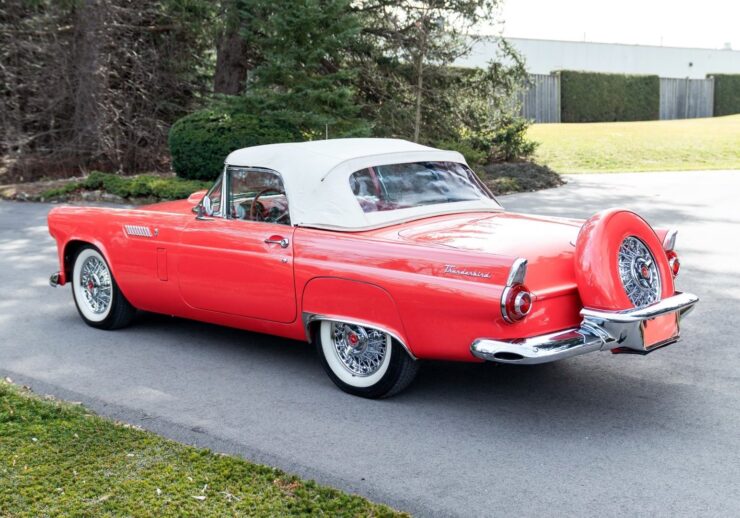
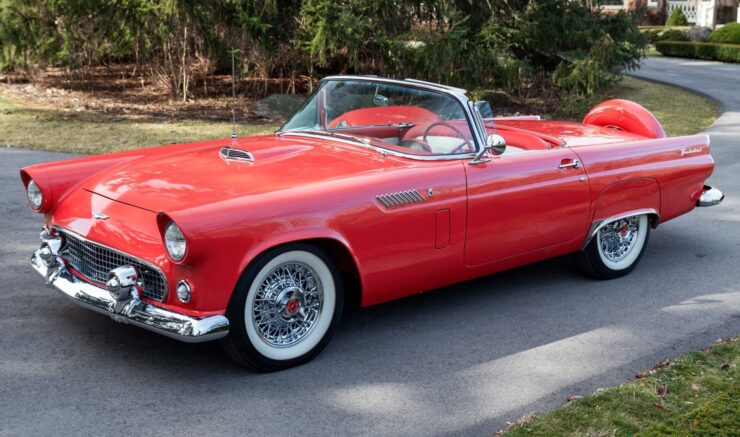
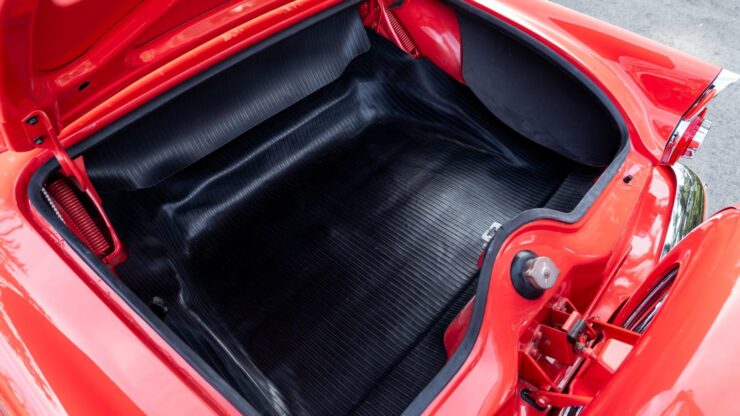
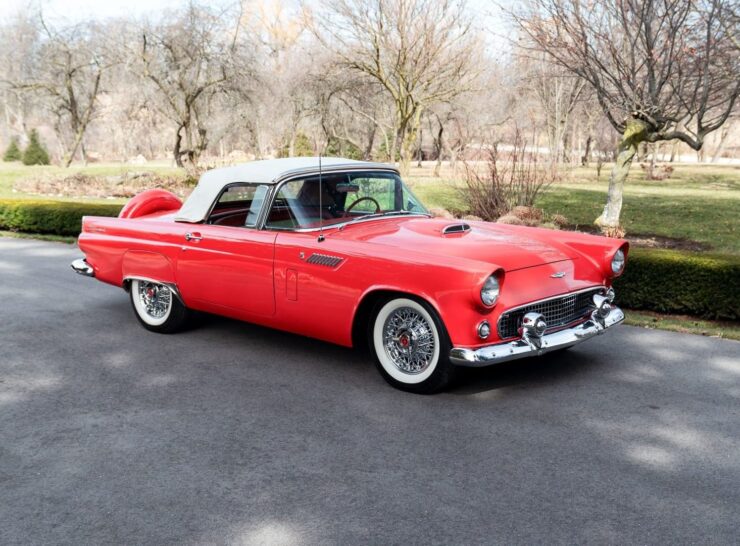
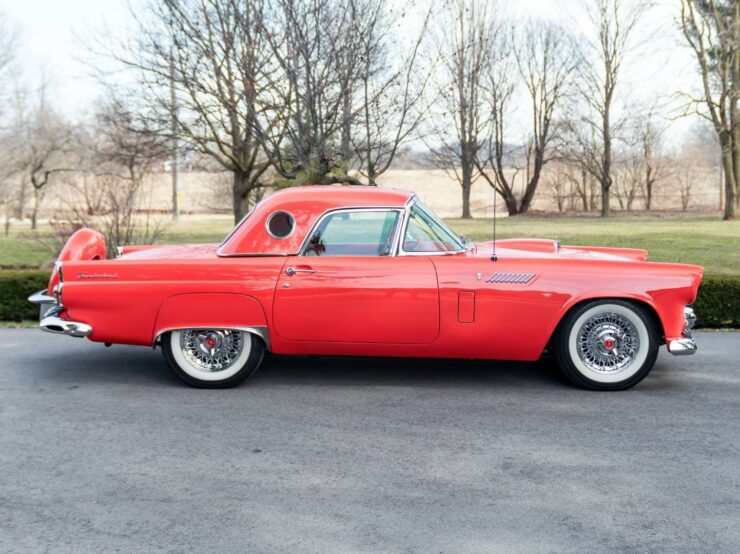
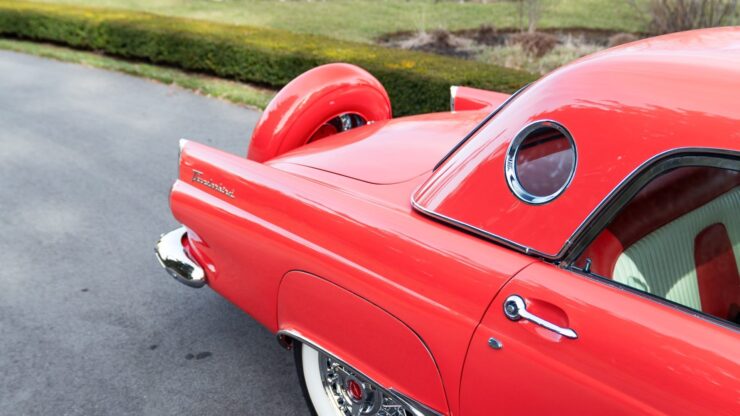
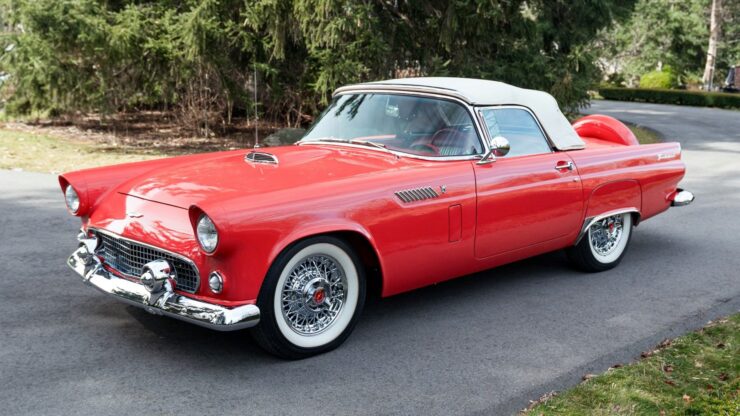
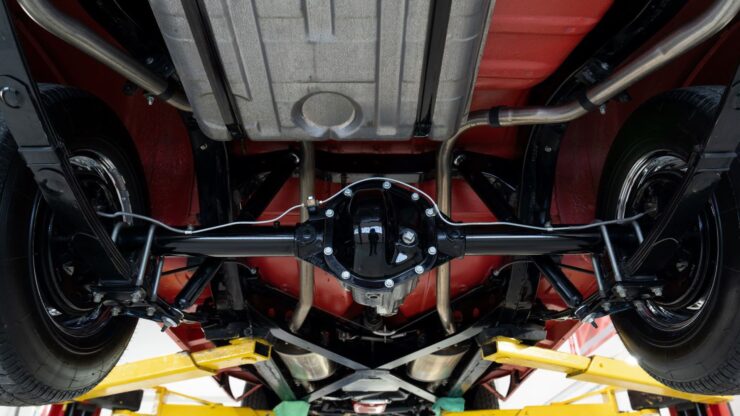
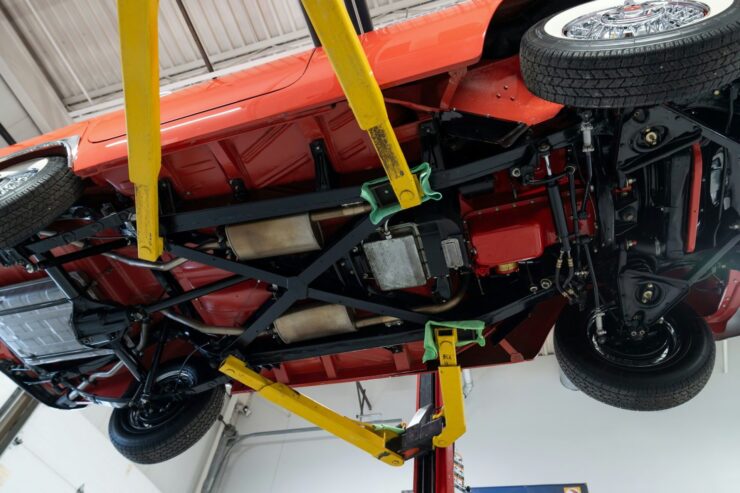
Images courtesy of Mecum

